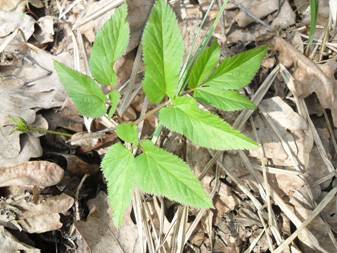
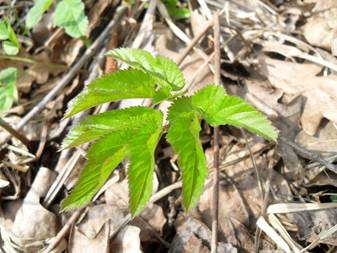
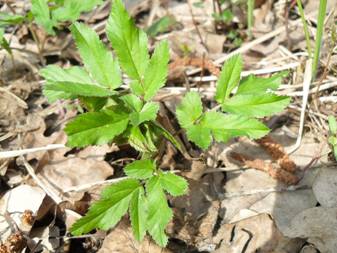
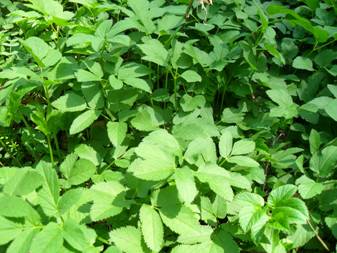
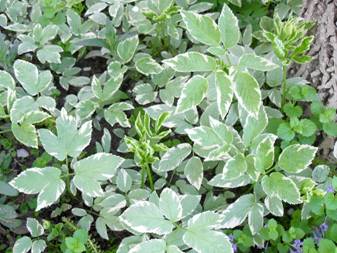
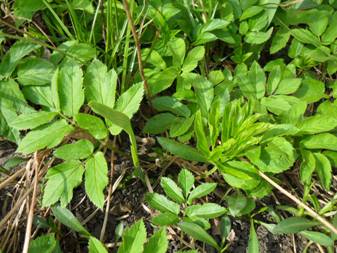

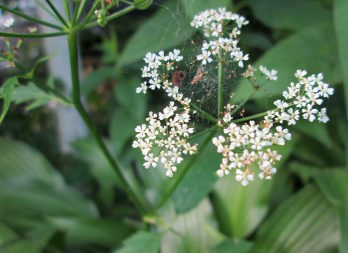

Ground elder; Goutweed (Aegopodium podagraria), fam. Apiaceae.
This herb is distinguished by twice ternary leaves, i.e. there are usually nine leaflets altogether, but sometimes even more. It only occurs in some part of the forest (see map), forming quite dense spinneys, the plants of each are probably more or less linked together with a common rhizome. In the city, there is an ornamental cultivar of goutweed with variegated pale-green leaves. It blooms starting from the middle of May.
Ground elders are great forest greens, that may pretty well substitute parsley or dill. From historical notations, this herb saved from hunger lots of people, and some hermits lived on ground elder on principle (though this is too far…). The Russian name of the plant originates from the word meaning "food". Ground elder contains protein, carbohydrates (glucose, fructose, umbelliferose), valuable flavonoids – quercetin and kaempferol, phytoncides, essential oils, potassium, magnesium, iron, copper, manganese, boron and titanium. The fungicides falcarinol and falcarindiol also reduce the risk of malignant tumors development.
From the personal experience – the leaves contain quite rough fibers, that impede eating ground elder raw. The best is to drink fresh juice from its leaves and shoots, the output rate of which is pretty high.